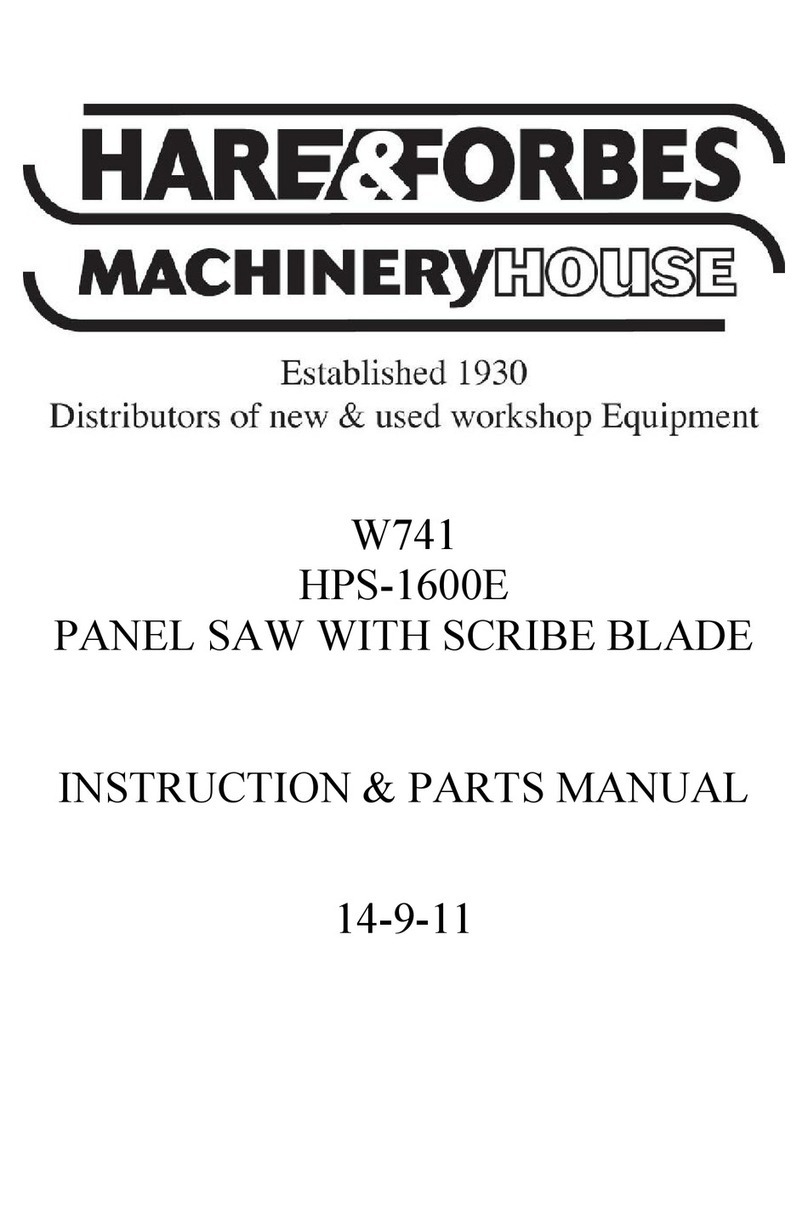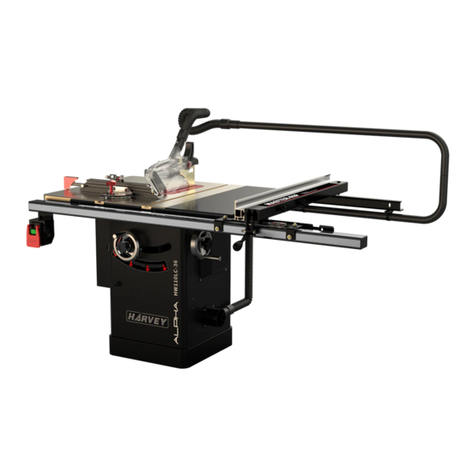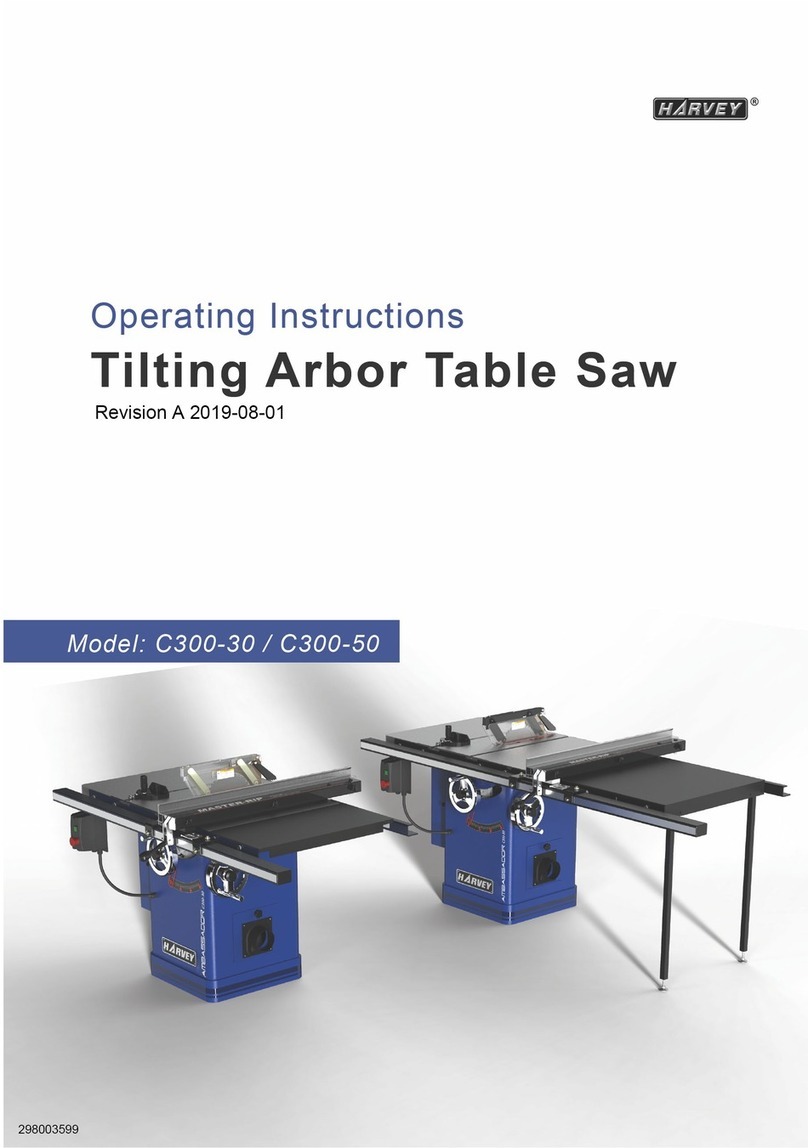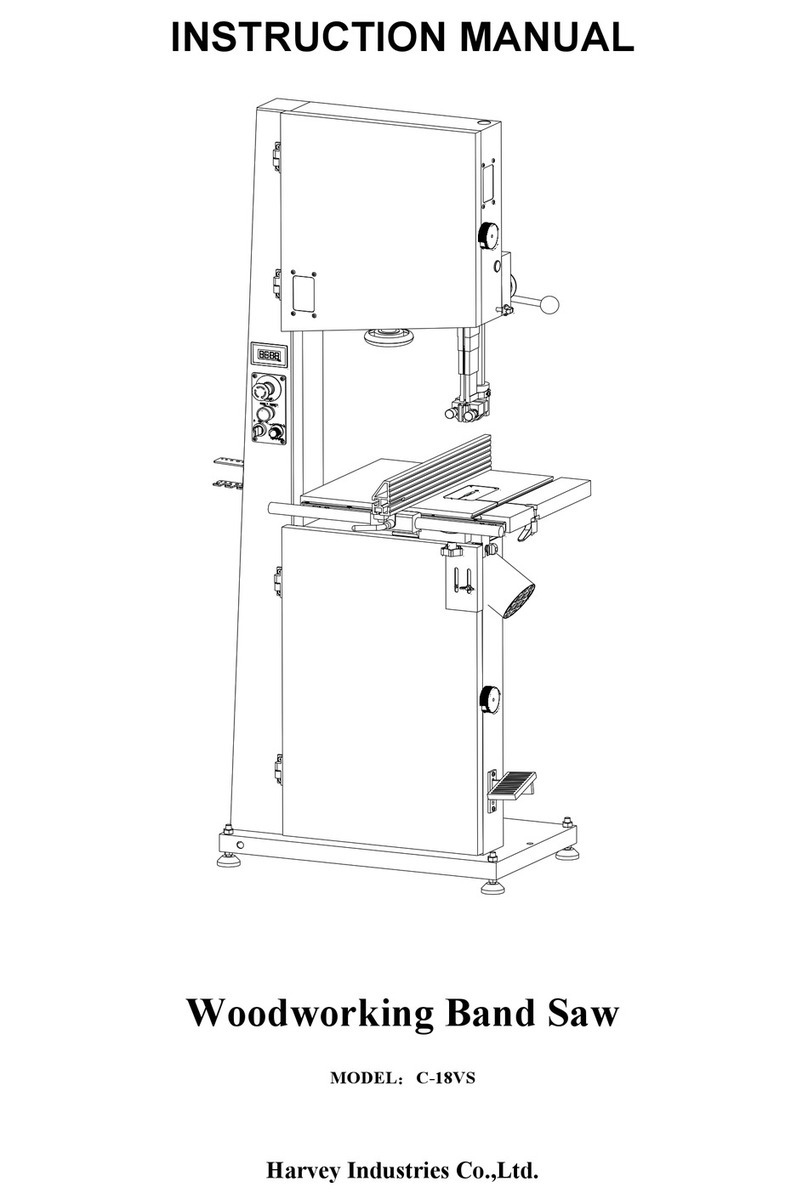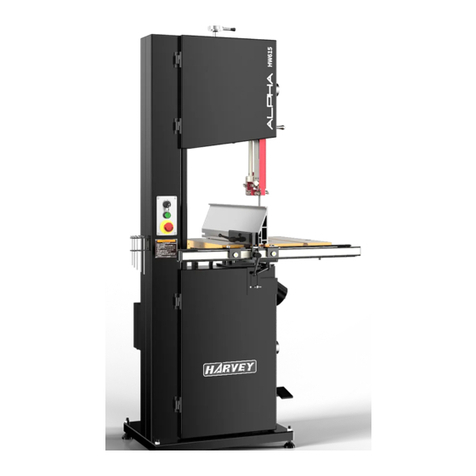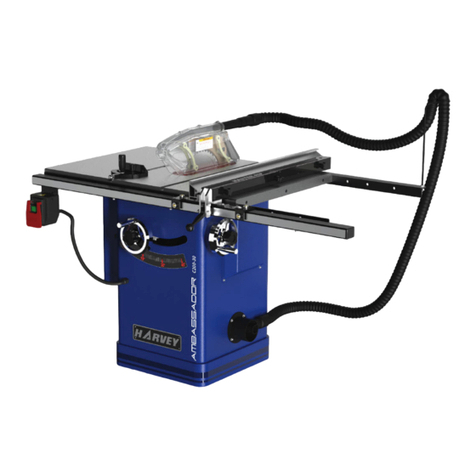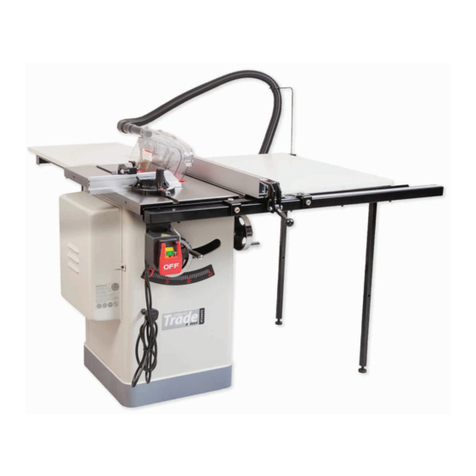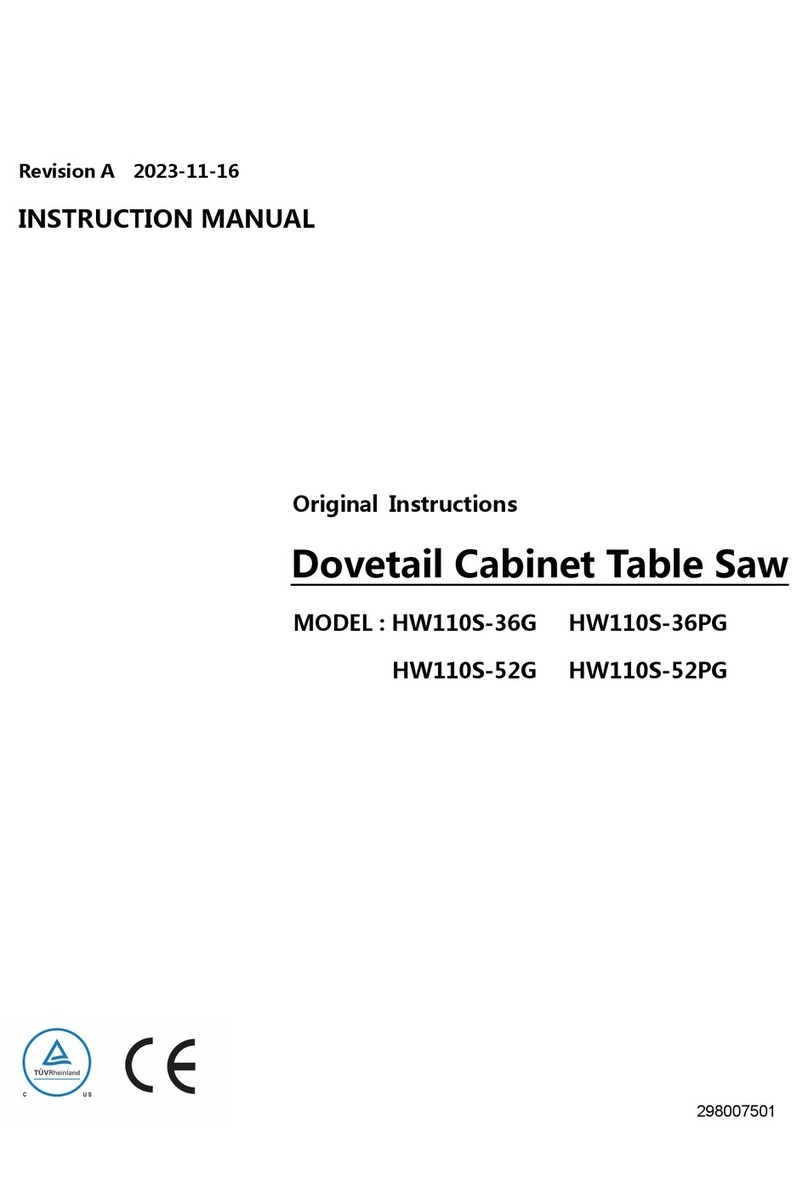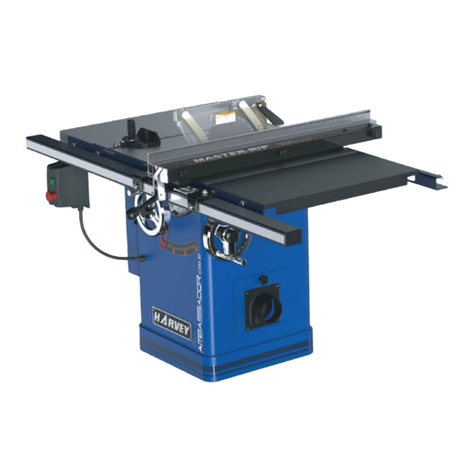
CONTENTS
1. Safety------------------------------------------------------------------------------------------------------ 1
1.1 General Machine Safety.----------------------------------------------------------------------------- 1
1.2 Band Saw Safety.-------------------------------------------------------------------------------------- 1
2. Feature Identification-------------------------------------------------------------------------------- 2
3. Specifications------------------------------------------------------------------------------------------ 3
4. Unpacking and Setup-------------------------------------------------------------------------------- 4
4.1 Unpacking--------------------------------------------------------------------------------------------- -- 4
4.2 Checking Contents ----------------------------------------------------------------------------------- 4
4.3 Power Supply------------------------------------------------------------------------------------------- 5
4.4 Grounding----------------------------------------------------------------------------------------------- 5
4.5 Extension Cords--------------------------------------------------------------------------------------- 5
4.6 Dust Collection----------------------------------------------------------------------------------------- 5
5. Assembly------------------------------------------------------------------------------------------------ 6
5.1 Stand Pad----------------------------------------------------------------------------------------------- 6
5.2 Work Table---------------------------------------------------------------------------------------------- 6
5.3 Spring Assembly--------------------------------------------------------------------------------------- 7
5.4 Rip Fence----------------------------------------------------------------------------------------------- 7
5.5 Tool Storage Hook------------------------------------------------------------------------------------- 7
5.6 Blade------------------------------------------------------------------------------------------------------ 8
6. Adjustment---------------------------------------------------------------------------------------------- 9
6.1 Blade------------------------------------------------------------------------------------------------------ 9
6.2 Blade Guide--------------------------------------------------------------------------------------------- 11
6.3 Work Table---------------------------------------------------------------------------------------------- 14
6.4 Fence----------------------------------------------------------------------------------------------------- 16
6.5 Belt Tension and Replacement--------------------------------------------------------------------- 18
7. Operation------------------------------------------------------------------------------------------------ 19
7.1 Switch----------------------------------------------------------------------------------------------------- 19
7.2 Brake Pedal--------------------------------------------------------------------------------------------- 19
8. Application---------------------------------------------------------------------------------------------- 20
8.1 Ripping --------------------------------------------------------------------------------------------------- 20
8.2 Crosscutting--------------------------------------------------------------------------------------------- 20
8.3 Resawing------------------------------------------------------------------------------------------------ 20
8.4 Curve Cutting------------------------------------------------------------------------------------------- 21
8.5 Blade Lead ---------------------------------------------------------------------------------------------- 21
9. Maintenance ----------------------------------------------------------------------------------------- 22
9.1 Lubrication----------------------------------------------------------------------------------------------- 22
9.2 Cleaning-------------------------------------------------------------------------------------------------- 22
9.3 Replacement-------------------------------------------------------------------------------------------- 22
9.4 Wheel Brush-------------------------------------------------------------------------------------------- 22
10. Trouble Shooting------------------------------------------------------------------------------------ 23
11. Exploded View and Parts List------------------------------------------------------------------ 25

